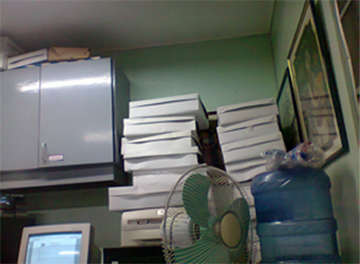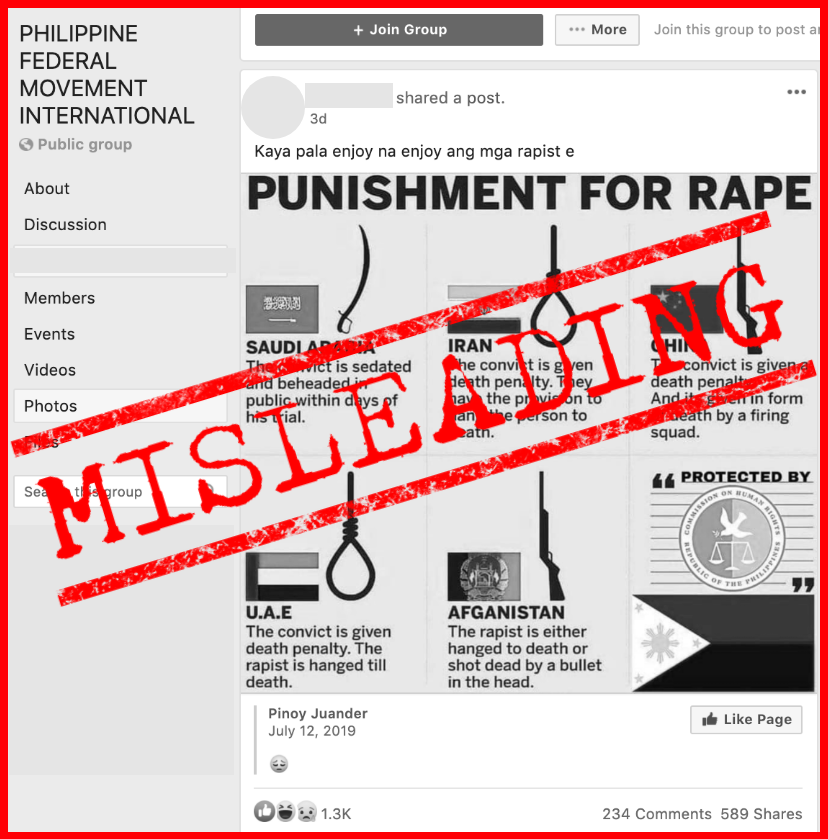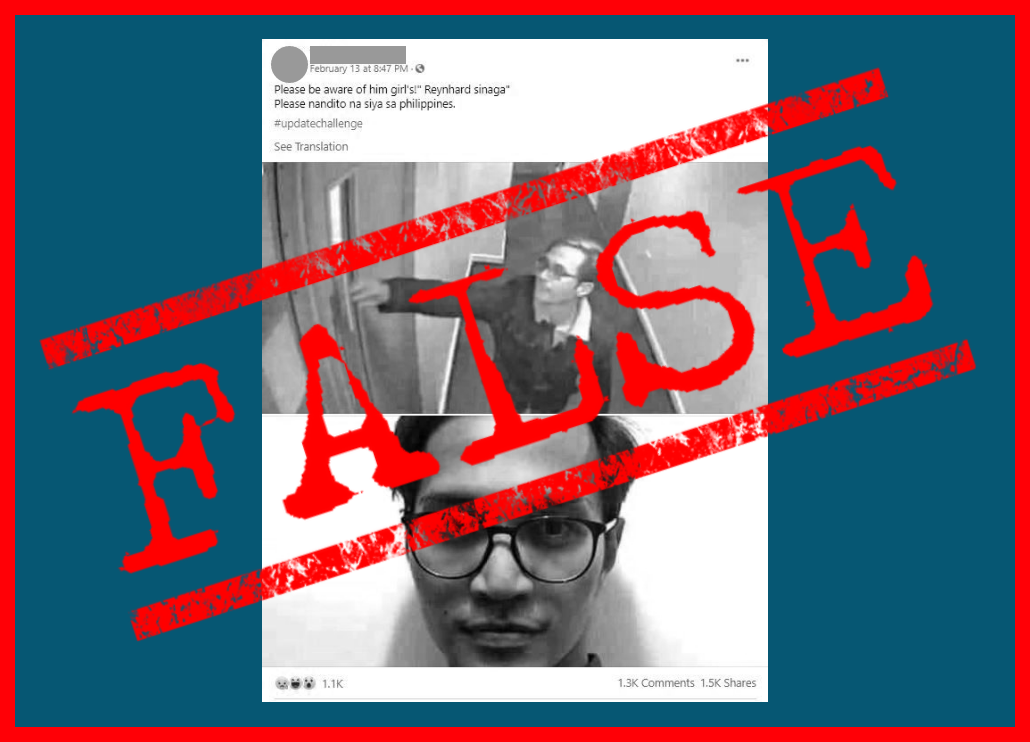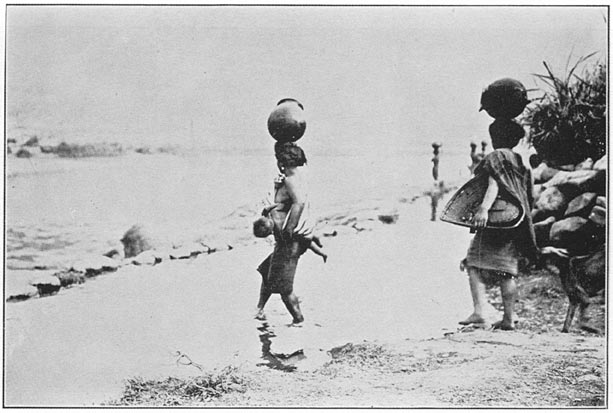
(First of two parts)
A SMALL, dark, musty room with broken windows at the bottom of one of the ground-floor stairs of the Philippine General Hospital is a treasure trove of stories. Locked up here are hundreds of white boxes—rape kits full of specimen from victims—stretching from floor to ceiling, wall to wall.
But the boxes lie idle, exposed to heat and to bugs and rats, their contents ignored and later disposed of without accomplishing their purpose.
In her 10 years as ward assistant at the PGH’s Women’s Desk, Rizza Pamintuan has never seen a rape kit being used to convict anybody. “In only two instances did the NBI (National Bureau of Investigation) and the PNP (Philippine National Police) get the boxes. We have no way of tracking what has happened to them,” she said.
The situation at PGH speaks volumes about how difficult it is to be a victim of rape in this country. A lack of coordination among medical and law enforcement personnel and ignorance and laziness of policemen and prosecutors result in crucial rape evidence rotting away in storerooms like the one in PGH. Consequently, rapists get away scot-free, their victims—especially those who muster the courage to come forward despite the stigma and cultural factors—denied justice.
Pamintuan receives victims of rape and other forms of violence, hears their stories and accompanies them as they weave their way through the various departments of the hospital. A number of the victims are referred to the PGH by the police or barangay officials. Others are brought by NGO workers. Some are called “walk-in”: They come out of their own accord, straight from their harrowing experience.
The victims are interviewed by social workers at the Womens’ Desk and referred to the Obstretics (OB) Department for an intensive physical examination. The rape kit is particularly useful if the rape occurred less than 72 hours before the hospital visit. If the victims are sent to the hospital by the police, PGH issues a standard doctor’s report—not the analysis of the rape kit’s contents—that would be brought back to the PNP station.
The contents of the kit sound comprehensive. There are oral, vaginal and anal swabs and smears. The victim’s clothes and debris from her body and surroundings. Saliva, head hair and pubic hair samples. Fingernail scrapings.
These samples sound as though they could help in pinning down the assailant. If the victim is too distraught, confused, weak or scared to stand up in court and point to her accuser, DNA that is found in the victim’s hair, nails, and body fluids will provide clues as to the culprit’s identity. However, it can only be used if there is DNA sample from suspects to compare the collected specimen with. Alas, investigations hardly ever reach this stage.

The PGH Women’s Desk supposedly serves as its Women and Children Protection Unit (WCPU), a feature that should be present in all government hospitals. These units were mandated by the Rape Victims Assistance and Protection Law passed in 1998, just a year after the Anti-Rape Law amended pertinent provisions in the Revised Penal Code.
Under these laws, rape has become a crime against persons, and not only a crime against chastity. The Anti-Rape Law also expanded the definition of rape to include several other acts that may not necessarily be considered sexual intercourse but are performed against the will of the victim nonetheless.
The Department of Health also issued Administrative Order 1B outlining the requirements for setting up WCPUs. The response team will be composed of representatives from the Department of Social Welfare and Development, Department of the Interior and Local Government, Department of Justice and the Department of Health.
But PGH is lucky. Other hospitals don’t even have fully functioning WCPUs, much less use a rape kit, or perform a thorough physical examination on victims of rape and violence.
The laws do not specify the use of rape kits. The Women’s Desk of the PGH uses them on its own initiative.
At the Rizal Medical Center in Pasig, a DOH-administered hospital, the WCPU is built into the Medical Social Services Unit. The office is busy the whole day with charity cases: If a rape victim walks in and seeks help, she would have to tell her story to the social worker within earshot of everybody in the room.
“It was not always this way,” said social worker Luningning Banocia, unit supervisor. “Years ago, we were sponsored by the Rotary Club of Pasig.”
In those better times, the WCPU had a room of its own in the hospital premises, painted in pastel colors. But the funding ran out and the hospital underwent a renovation. It has been two years, and nothing has been the same.
In fact, senior OB resident Ria Rachelle Almoneda said they only see rape victims for medical purposes. Last year, for instance, a 16-year-old lesbian was raped and had gotten pregnant as a result of the incident. She tried to abort the baby. When complications arose, it was only then that she was treated at the hospital. Almoneda has no idea what has happened to the victim.
Storage is not a problem here. This is because no rape kits are even used—patients are “referred” to the PNP hospital in Camp Crame if they want themselves examined for purposes other than medical treatment.
“Referral” is a big word even among the staff of the PNP Women and Children Protection Center. Civilian social workers Nora Gibote and Rowena Mateo Gatus said they normally advise victims to go to the police stations in their districts. The police stations, in turn, tell the victims to have themselves examined in government hospitals nearest them. (Private hospitals will have none of the trouble of having their doctors go to various courts to testify on their findings.)
At the PNP Crime Laboratory’s medico-legal division, physical and genital examinations are performed on the rape victim. Gibote and Gatus, however, said these procedures are merely to test for trauma, depending on the lacerations on the victim’s vagina. Taking DNA samples for the victim would entail “a different request” altogether.
But Senior Superintendent Elimer Catabay, chief of the Crime Lab’s Operations Management Division, said their team gathers everything from latent prints, fingernail scrapings, hair samples and sperm specimens from victims. Catabay, however, provides no specifics as to how the gathering of samples is conducted.
Asked whether the evidence is stored properly, he pointed to an ongoing construction site at the PNP compund—the DNA building that will be operational in June this year.
In the meantime, where and how are the evidence stored? “This is why we are building a new structure that will have proper storage,” he said.
Banocia said only four rape victims were assisted in 2011.
In Mandaluyong City, the National Center for Mental Health’s WCPU is a spacious room with pastel-colored walls and inviting chairs. But this WCPU specializes in psychological trauma to victims of violence. Physical examination is referred to the Camp Crame, the PNP headquarters.
“Of course, our aim is to have our own people here in the WCPU who will do everything so that the patients do not have to go from one place to the next,” said Dr. Beverly Azucena, WCPU head of the hospital. “That will happen soon.”
If the DOH were to be asked, it would confine itself to what the ideal situation is. Dr. Honorata Catibog, head of the DOH’s Family Health Services Unit, said her office is concerned about policy—what the units should do, how they could upgrade their standards.
Catibog’s team has, in fact, collaborated with the Philippine Commission on Women (formerly the National Commission for the Role of Filipino Women) in drafting a performance assessment tool for all WCPUs in government hospitals all over the country. The tool acts as benchmark: It is supposed to guide the operations of WCPUs for it to meet objectives as envisioned by the law.
The DOH’s administrative order outlines the requirements for setting up WCPUs.
The PNP guidelines are also clear in the step-by-step process in assisting victims of sexual assault. The process flowchart is specific to the steps taken for histopathological and serological examination, the office and person responsible and the expected processing time for each step: Submission of letter-request, processing of payments, relaying to the victim of the procedure, actual examination, evaluation of results and release of results.
These steps, however, do not include the extraction of DNA specimen from the victim, any form of psychological counseling or legal advice.
In October 2007, the Supreme Court laid down the Rules for the use of DNA evidence in court cases. The issuance was a landmark move, signifying the court’s recognition of the probative value of DNA evidence in criminal proceedings. If the samples are collected and stored properly, they could hold the key to identifying the perpetrator without exclusively relying on testimonial evidence.
According to Dr. Maria Corazon de Ungria, head of the DNA Analysis Laboratory at the University of the Philippines National Science Research Institute, at least four entities can now perform DNA analysis in the Philippines: UP, NBI, PNP and the St. Luke’s Medical Center.
Despite the technology, DNA analysis cannot be performed if samples from the crime scene are not available.
(To be concluded)
(The author is an editor of Manila Standard Today and a student at the Ateneo de Manila University’s M.A. Journalism Program. She submitted a version of this story for her Investigative Reporting class under VERA Files trustee Luz Rimban.)





